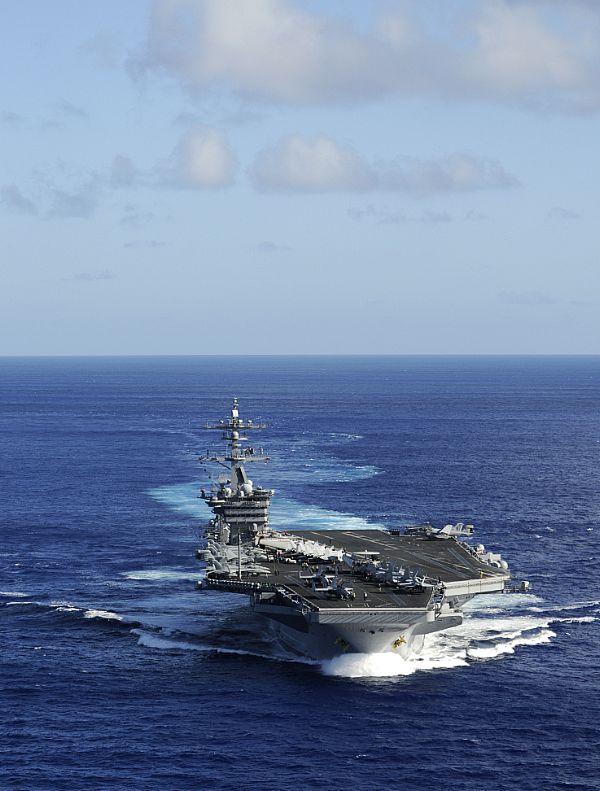
Welcome to MSW’s Scuttlebutt! Here’s the news for the day.

US Navy Contract Awards Set LCS Unit Cost at $440M
Source: U.S. Department of Defense
Lockheed Martin Corp., Baltimore, Md., is being awarded a fixed-price-incentive contract for the fiscal 2010-2015 block buy of Flight 0+ Littoral Combat Ships (LCS).
The fiscal 2010 LCS Flight 0+ ship award amount is $436,852,639. There are additional line items totaling $54,742,639 for technical data package, core class services, provisioned items orders, ordering, a not-to-exceed line item for non-recurring engineering, and data items. The total amount of the contract is $491,595,278.
The contract includes line items for nine additional ships and options for post-delivery support, additional crew and shore support, special studies, class services, class standard equipment support, economic order quantity equipment, selected ship systems equipment for a second source and selected ship system integration and test for a second source which, if authorized/exercised, would bring the cumulative value of this contract to $4,570,604,367.
The cumulative value excluding any option items related to the second source is $4,069,913,166.
Work will be performed in Marinette, Wis. (56 percent); Walpole, Mass. (14 percent); Washington, D.C. (12 percent); Oldsmar, Fla. (4 percent); Beloit, Wis. (3 percent); Moorestown, N.J. (2 percent); Minneapolis, Minn. (2 percent); and various locations of less than one percent, each totaling seven percent. Work is expected to be complete by August 2015.
ACTUV Program Initiates Concept Designs
Source: Defense Advanced Research Projects Agency
As new submarine classes achieve ever increasing levels of acoustic quieting and operational performance, tracking foreign submarines has become more difficult. Some modern diesel electric submarines are able to challenge conventional tracking approaches, risking future U.S. capability in the undersea battlespace. The Defense Advanced Research Projects Agency (DARPA) has initiated the Anti-Submarine Warfare (ASW) Continuous Trail Unmanned Vessel (ACTUV) program to address this deficiency.
The ACTUV concept is based on an independently deployed unmanned naval vessel optimized for continuous trail of quiet submarines. “It will be a clean sheet unmanned ship design with no person stepping aboard at any point in its operating cycle,” said Rob McHenry, DARPA program manager. “ACTUV will enable unique architectures for robust platform performance across a range of conventional and non-conventional missions, as well as cost-effective fabrication approaches.”
The program seeks to advance autonomous operations technology with a goal of full compliance with safe navigation requirements while executing its tactical mission under a sparse remote supervisory control model. Finally, ACTUV will leverage its unique characteristics to employ a novel suite of sensors capable of robustly tracking quiet diesel electric submarines to deliver a game changing operational capability that puts asymmetric tactical and economic advantages in the United States’ favor.
Based on lessons learned from the six month Phase 1 effort, DARPA will define a system performance specification to serve as the basis for subsequent competition for prototype system design, construction and at-sea demonstration.
Six contractor teams will support the development of concept designs for the ACTUV system, and execute risk reduction activities for key technology enablers. Integrated system concept design teams include Northrop Grumman Undersea Systems, based in Annapolis, Md.; Science Applications International Corp (SAIC) Intelligence, Security, and Technology Group, based in Long Beach, Miss.; and Qinetiq North America Technology Solutions Group, based in Waltham, Mass. Conducting development and demonstration of key enabling technologies are the University of Washington Applied Physics Laboratory, in Seattle, for testing of high frequency active sonar for acquisition and tracking of submarine targets; Spatial Integrated Systems, based in Kinston, N.C., for development and at-sea demonstration of unmanned surface vessel autonomous algorithms for submarine tracking and Rules of the Road compliance; and Sonalysts, based in Waterbury, Conn., for development of an exploratory crowd-sourced tactics simulator.

USS Michigan (BB 27)
Today’s website is USS Michigan (BB 27). Enjoy.
This Day in U.S. Naval History
1863 - Blockading ship USS Quaker City captures sloop Mercury carrying despatches, emphasizing the desperate plight of the South.
1910 - Commissioning of USS Michigan (BB 27), the first U.S. dreadnought battleship.
1989 - F-14 Tomcats from Fighter Squadron 32 embarked aboard USS John F. Kennedy (CV 67) shoot down two hostile Libyan MiGs.
Photo of the Day

The aircraft carrier USS Carl Vinson (CVN 70) transits the Pacific Ocean. Carl Vinson and Carrier Air Wing (CVW) 17.
Gator











